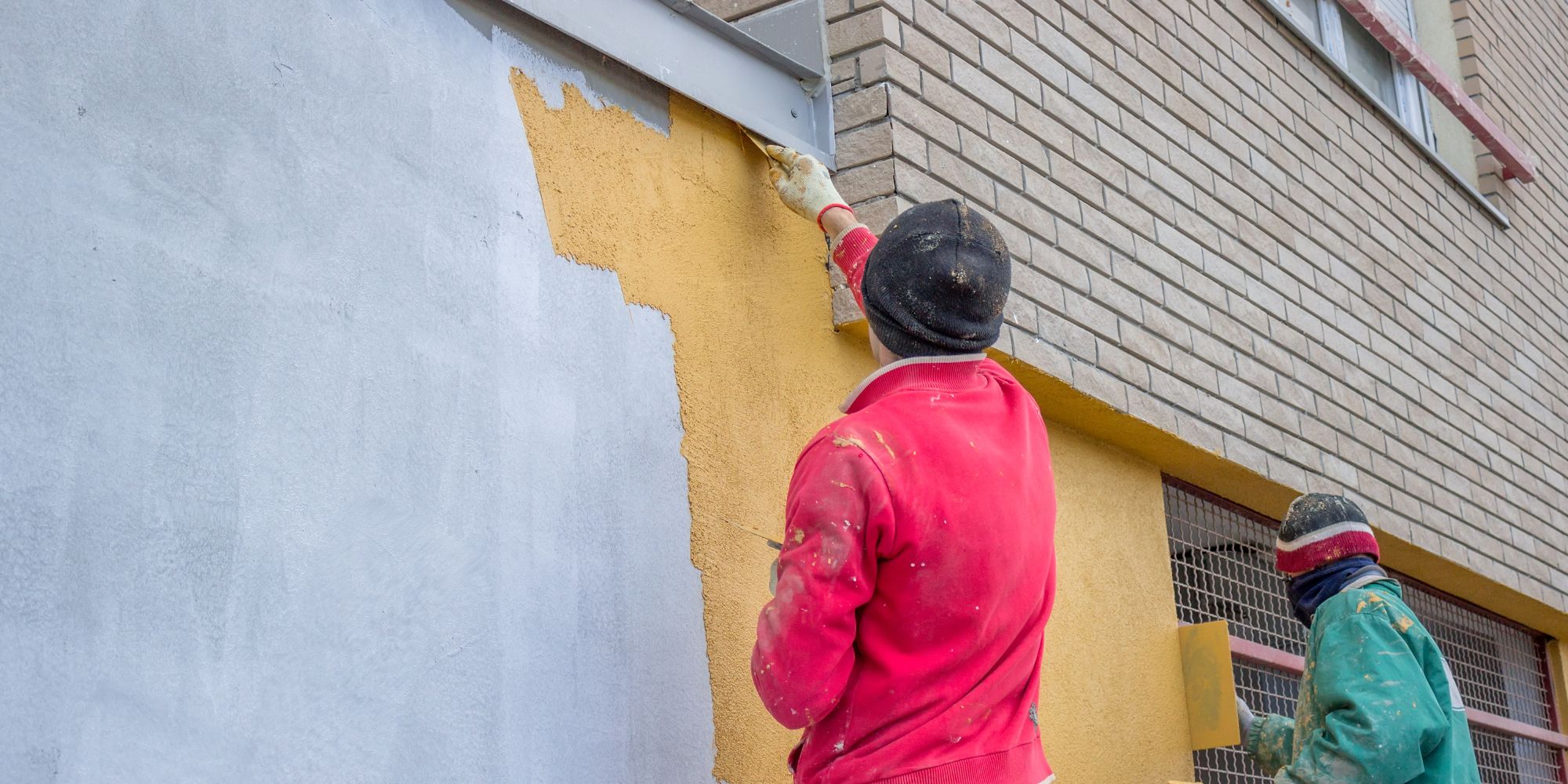Table of Contents
Exterior Painting: How to Refresh Your Space

Exterior Painting
Are you tired of looking at the same plain abroad of your home? It's time to give it a fresh new look and be the envy of the neighborhood. With the right ones tips and techniques, you can transform your outdoor space with a simple stroke of paint.
In this article, we've put together tips on how to renew it abroad of your home using paint. From choosing the perfect color palette to understanding the right type of paint for different surfaces, our experts will guide you step-by-step through the process.
Whether you plan to sell it home you or just want to create one welcoming atmosphere for your family and friends, a fresh coat of paint can do wonders. It can add curb appeal, increase the value of your property and breathe new life into your outdoor space.
The importance of renewing the exterior of your home
The abroad of your home is the first thing people see and sets the tone for the rest of your property. A worn or weathered exterior can give the impression that your home is neglected or in need of repair. On the other hand, a well-maintained and visually appealing exterior can make a lasting positive impression.
Its renewal foreign of your home with paint is an economical way to instantly improve its appearance. It allows you to cover any imperfections, update the color scheme and create a cohesive and attractive look. Either you have one modern or a traditional home, there are paint options and techniques available to enhance its unique architectural features and style.
Additionally, a fresh coat of paint can provide protection from the elements, such as UV rays, moisture and extreme temperatures. This can help prevent damage and extend the life of your exterior surfaces, saving money on repairs in the long run.
Choosing the right paint color for your exterior
Choosing the right paint color for the abroad of your home can be a daunting task. It's important to consider several factors, including the architectural style of your home, the surrounding landscape, and even the aesthetics of the neighborhood.
A popular approach is to consider the existing colors in your outdoor space. Look at the shades of your roof, windows and landscape elements. Choose a paint color that complements or contrasts with these existing colors to create a harmonious and visually appealing look. For example, if you have a red brick abroad, a neutral color such as beige or gray can provide a timeless and elegant setting.
Another issue is the climate in your area. Lighter colors tend to reflect heat, making them a good choice for warm climates, while darker colors can absorb heat and provide warmth in colder areas. However, keep in mind that dark colors may fade faster under bright sunlight.
It's also worth exploring color trends and consulting professionals for advice. Many paint manufacturers offer online tools and virtual color visualizers that allow you to see how different colors will look on the exterior of your home. This can help you make an informed decision and avoid potential regrets.
Preparing your exterior for painting
Before diving into the painting process, it's important to properly prepare your outdoor space. This ensures that the paint adheres well and provides a long-lasting finish. Here are the basic steps to follow:
Clean the surfacess: Remove any dirt and paint from exterior surfaces. Use a pressure washer or scrub brush and a mild detergent to clean the area thoroughly. Rinse off the cleaning solution and allow the surfaces to dry completely.
Repair and replace damaged areas: Inspect the exterior for cracks, holes or rotten wood. Repair these areas using suitable fillers, sealants or replacement materials. This step is necessary to create a smooth and even surface for the paint to adhere to.
Sand and smooth rough surfaces: If there are uneven areas, sand them down using sandpaper or sandpaper. This helps create an even texture and removes any loose particles or imperfections.
Protect the surrounding areas: Cover windows, doors and any other areas you don't want to paint with plastic sheeting or masking tape. This prevents accidental paint splatters and makes the cleaning process easier.
Taking the time to properly prepare your exterior will ensure a clean and smooth canvas for your paint, resulting in a professional-looking finish.
Tools and materials needed to paint the exterior of your home
Its painting foreign of your home requires the right tools and materials to achieve the best results. Here is a list of essentials you will need:
High quality paint: Invest in a color that has designed especially for external use. Look for features like UV resistance, durability and ease of application. Consider the type of surface you're painting, whether it's wood, stucco, brick or paneling, and choose a color that's appropriate for that material.
Brushes and rollers: Choose brushes and rollers that are appropriate for the type of paint you are using and the surface you are painting. Synthetic brushes are ideal for latex or water-based paints, while natural bristle brushes work well with oil-based paints. Roller covers come in different thicknesses, so choose one that matches the texture of your exterior surfaces.
Extension poles: They are essential for access to high areas, such as eaves or walls second floor. Extension poles allow you to paint comfortably without the need for ladders or scaffolding. Make sure the pole is sturdy and securely attached to your brush or roller.
Sails or tarpaulins: Protect the ground and surrounding areas from paint drips and spills by laying down tarps or tarps. This will save you time and effort during the cleaning process.
Paint trays and buckets: Use paint trays for smaller areas or treatments and buckets for larger sections. This allows easy access to the paint and prevents it from drying too quickly.
Ladders or scaffolding: Depending on the height of your home, you may need ladders or scaffolding to reach certain areas. Make sure you follow safety instructions and take the necessary precautions when working at heights.
Masking tape: Use masking tape to create clean edges and protect areas you don't want painted, such as window frames or trim. Make sure the tape is securely applied to prevent any paint bleeding.
With the right tools and materials on hand, you'll be well prepared to tackle your home's exterior painting project.
Step-by-step guide to painting the exterior of your home
Now that you have everything you need, it's time to start painting. Follow these steps for a successful and efficient painting process:
Start with primer: If your exterior surfaces are bare or repaired, applying a primer is essential. Primer creates a smooth and even base for paint adhesion, improves coverage and enhances the longevity of the finish. Apply the primer using a brush or roller, following the manufacturer's instructions.
Paint from top to bottom: Start painting at the highest point of your home, such as eaves or gables, and work your way down. This prevents paint drips from falling onto freshly painted areas. Use a brush for detailed areas, corners and trim and a roller for larger areas. Apply the color in soft and even strokes, lightly overlapping each stroke for consistent coverage.
Working in sections: Break it up abroad of your home into manageable sections and complete one section at a time. This allows you to focus on achieving a high quality finish without feeling overwhelmed. Start and finish each section before moving on to the next to ensure a seamless look.
Pay attention to the drying times: Different colors have different drying times, so keep this in mind as you work. Allow each coat to dry thoroughly before applying another coat or moving on to the next section. This prevents smudging or uneven results.
Apply multiple coats if needed: Depending on the color you are using and the desired finish, you may need to apply several coats of paint. Follow the manufacturer's recommendations for the number of coats required for optimal coverage and durability. Allow sufficient drying time between each coat.
Pay attention to the details: Take the time to paint any trim, shutters or other architectural elements separately. This allows you to give them special attention and ensure a neat and polished appearance. Use a smaller brush for precision and avoid painting on adjacent surfaces.
Clean properly: After finishing the painting process, clean brushes, rollers and other tools according to the manufacturer's instructions. Dispose of any leftover paint or materials responsibly. Remove the fabrics or tarps and inspect the area for any paint drips or leaks that need to be addressed.
By following these step-by-step instructions, you'll be well on your way to transforming your home's exterior with color.
Tips to achieve a professional finish
To achieve a finish with professional look and get the most out of your paint, consider the following tips:
Choose high quality paint: Investing in a trusted brand and high quality paint will ensure better coverage, durability and color retention. It may cost more up front, but it will save you time and money in the long run.
Don't skimp on preparation: Its proper preparation foreign your space is vital to a successful paint job. Take the time to clean, repair and prime surfaces before applying paint. This will result in a smoother and longer lasting finish.
Use the right techniques: When painting, use smooth and steady strokes, keeping a wet edge to avoid visible brush or roller marks. Blend each stroke with the previous one to create a seamless finish. If you're not confident in your painting skills, practice on a small inconspicuous area before tackling the entire exterior.
Consider the weather conditions: Ideally choose a day with mild temperatures and low humidity for outdoor painting. Excessive heat or cold can affect the drying time and quality of the finish. Avoid painting on windy days to prevent dust or debris from sticking to wet paint.
Take breaks when needed: Painting the exterior of your home can be a physically demanding job. Take breaks as needed to rest and recharge. This will help you maintain focus and avoid mistakes or accidents.
Maintain your paint: After completing the painting process, try to maintain your newly refreshed exterior. Clean surfaces regularly, inspect for any damage or treatments needed, and consider periodic repainting to keep your home looking its best.
By incorporating these tips into your painting project, you'll be able to achieve a professional-quality finish that will enhance the beauty and value of your home.
Conclusion: Enjoying Your Outdoor Space Transformation
Transforming your home's exterior with paint is a rewarding endeavor that can greatly improve its curb appeal and overall value. By following the expert tips and techniques outlined in this article, you'll be well equipped to refresh your outdoor space and create a welcoming atmosphere for you and your loved ones.

Fill it in
Form